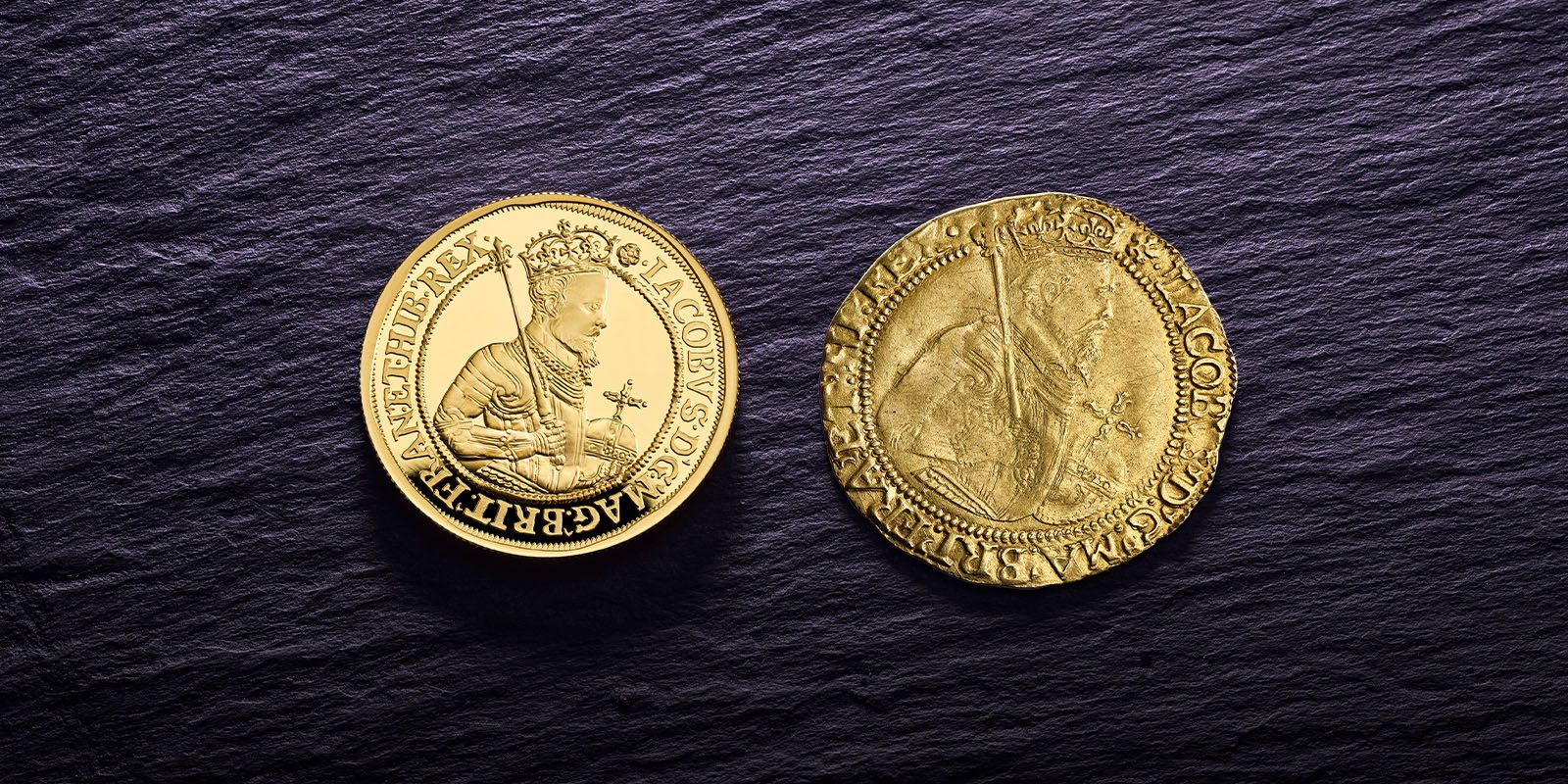Following the success of the first coin in our British Monarchs Collection, the arrival of the second coin in the series sees us enter the Jacobean period with a coin dedicated to the first Stuart king of England. Chiefly remembered in the pages of history as England’s Scottish king, if you delve deeper into James I’s reign it reveals that his true legacy is as the first monarch to be called ‘King of Great Britain’. Throughout his incumbency, one of James I’s primary objectives was to promote his position as king of both Scotland and England – a fact that is evident through the coins of the era.
The coinage from James I’s reign can generally be categorised into three distinct sections that cover specific periods during his tenure – the first coinage (1603–04), the second coinage (1604–19) and the third coinage (1619–25). Whilst there are many similarities between the coins from each of these periods, there are also notable differences, which often relate to the king’s political stance on British unification and his desire to put his own stamp on the coinage.
Much like the coinage of the Tudor dynasty, the first gold coins of James I’s reign included the gold Sovereign, worth 20 shillings. However, reflecting his vision for a truly united kingdom, James I opted to change the face of English coinage and introduced a new coin called the unite to replace The Sovereign that was first introduced by the dynasty that preceded him.
By the time the third coinage of James I’s reign arrived, even more changes were made that impacted a wide range of Jacobean coins, including the unite, the result of which meant that a new coin worth 20 shillings was once again required. After the introduction of a lighter 20-shilling piece in 1619, which became known as the ‘laurel’, no further unite coins were minted during James I’s reign. That being said, whilst the weight and value of the unite fluctuated over time, it remained in use, was a staple of hammered Stuart coinage – struck for both Charles I and Charles II – and was even struck annually during the Commonwealth. With the introduction of the guinea in 1663, the unite ceased to be struck.
In addition to introducing new names to the currency, updated inscriptions also appeared on the coins. Those struck in the first period of James I’s coinage are notable for the inclusion of the title ‘King of England and Scotland’ on the obverse, whilst denominations from the second period onwards tend to include the title ‘King of Great Britain’. The phrase 'Those God has joined together let no man put asunder' appeared in Latin on popular denominations such as the silver sixpence, ‘Henry united the Roses, James the Kingdoms’ appeared in Latin on the double-crown, and the less subtle phrase ‘I will make them one nation’ – taken from the Bible (Ezekiel 37:22) – graced the unite and laurel coins.
In addition to these changes, a revised Royal Arms was also introduced to reinforce the Stuart king’s self-styled stance as ‘King of Great Britain’. The new version brought together the respective Royal Arms of England, Scotland and Ireland and featured England’s three lions, the lion rampant of Scotland and the harp of Ireland, along with the gold fleurs-de-lis of France. This updated shield appeared on the reverse of Jacobean coinage and aside from the French contingent, the Royal Shield remains very similar to this day.
Whilst James I successfully united the two crowns of Scotland and England, true political union wasn’t achieved until the eighteenth century. The Acts of Union were passed in the English and Scottish parliaments in 1707, officially uniting the two kingdoms to form the Parliament of Great Britain. This British Monarchs coin celebrates the first ‘King of Great Britain’ and features a classic, seventeenth-century coinage portrait of James I as it would have appeared on coins of the era. Collect your classic James I coin design and discover how we are remaking history for today with the British Monarchs Collection.
King James I
Be Inspired
BRITISH MONARCHS – JAMES I BEHIND THE DESIGN
Find out more

